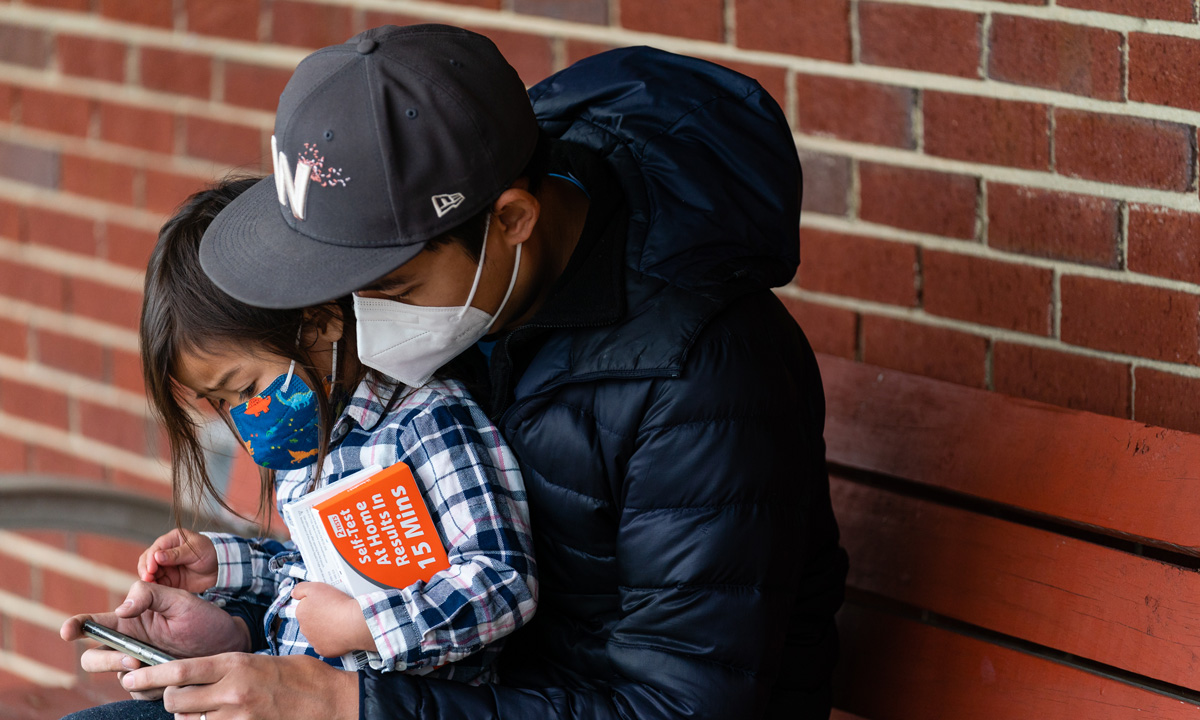‘We Are in a Different Place’: CDC Lifts 5-Day Isolation Guidelines for COVID
Health officials reveal recommendations to treat COVID more like other respiratory illnesses.

Get stories like this delivered straight to your inbox. Sign up for The 74 Newsletter
This article originally appeared in the Atlanta Journal-Constitution
On March 1, Centers for Disease Control and Prevention officials announced new guidelines for people with COVID-19, recommending those with the virus treat it the same as the flu and RSV — staying home while they have symptoms and fever.
The guidelines eliminate earlier recommendations for five days of isolation and testing for COVID, marking a new approach for the federal health agency. They said the new guidelines are intended to make it easier for people to know how to protect others and take into account that people may not know which virus they have.
“We are in a different situation with the level of protection we have against the virus and the prevention steps we know work to protect ourselves and others,” said CDC Director Dr. Mandy Cohen in announcing the changes at a press conference.
People with COVID can return to work or regular activities if their symptoms are mild and improving and it’s been at least 24 hours since they’ve had a fever, without fever-reducing medicines — the same standard used for the flu and respiratory syncytial virus or RSV.
After resuming normal activities, the CDC recommends people consider additional strategies for the next five days to prevent the spread of the virus, including wearing a well-fitted mask and keeping a distance from others. Those who are at high risk of severe illness, such as the elderly or those with weakened immune systems, should seek out treatment right away to help reduce their chances of getting seriously sick.
The changes reflect the diminishing threat of the coronavirus and come on the eve of the fourth anniversary of the first two confirmed COVID cases in Georgia.
Four years into the pandemic, most people have had COVID at least once. At least 98% of the U.S. population has some immunity, whether from infection, vaccination or both.
The changes in recommendations should be easier to understand and follow, CDC officials said.
Many people have not been following the five-day isolation guidance anyway, health officials say. A recent survey by the CDC found less than half the people questioned said they would use an at-home COVID test if they had COVID symptoms.
CDC officials also emphasized we have more tools to treat COVID, including the antiviral Paxlovid.
But immunity can wane as new variants emerge. CDC officials repeatedly stressed the importance of getting updated COVID vaccines to help protect against severe illness. CDC officials said about 95% of people who were hospitalized during this winter season with COVID did not get one of the updated vaccines released last fall.
Nationally, 41% of people 65 and older took the updated vaccine since it was released last year, the highest vaccination rate of any age group. That rate is much lower in Georgia, where about 22% of people 65 and older took the shot, according to the Georgia Department of Public Health.
Cohen said even with high levels of the coronavirus spreading this winter season, COVID hospital admissions have decreased by about 75% and deaths by more than 90% compared to January 2022.
While the number of COVID illnesses are down dramatically from earlier points in the pandemic, they remain higher than influenza and can be more serious. COVID continues to hospitalize and kill more people than the flu and can trigger lasting complications such as long COVID which doctors and scientists are still trying to understand.
The new isolation guidelines will not apply to nursing homes and hospitals with more vulnerable populations, CDC officials said.
“Let’s be clear,” said Dr. Demetre Daskalakis director of the CDC National Center for Immunization and Respiratory. “COVID-19 is not the flu and it is different from other respiratory illnesses, and leads to more lasting effects.”
But COVID does have key things in common with these other viruses, which lead to a streamlined guidance for these respiratory illnesses. Daskalakis said the symptoms are similar, they are spread in similar ways, and share many of the same prevention strategies.
Dr. Jayne Morgan, executive director of health and community education for Piedmont Healthcare, said COVID can be managed differently now that there’s more immunity to the virus that causes it. “To be clear, COVID-19 remains a public health concern, and a new variant can change the trajectory at any moment, however currently, that threat is no longer critical,” Morgan said in an e-mail.
Jodie Guest, a professor at Emory University’s Rollins School of Public Health and vice chair of the Department of Epidemiology, said one positive outcome from the new guidelines might be that more people will test for COVID if a positive test no longer requires a five-day isolation period.
The CDC originally advised 10 days of isolation for COVID cases, but in late 2021 cut it to five days for those with no symptoms or only mild illnesses. That change in guidelines led many companies to pull back on paying employees to stay home with COVID, including Walmart and Amazon.
Over more recent years, many employers and employees have not been adhering to the isolation guidelines. Questions about the impact remain, as well as questions about whether workers with no paid sick days will go to work while still sick.
Guest expressed concern about this.
“We need to remember that our workforce is negatively impacted when people who are contagious feel they have to come to work,” Guest said in an e-mail.
Get stories like these delivered straight to your inbox. Sign up for The 74 Newsletter

;)